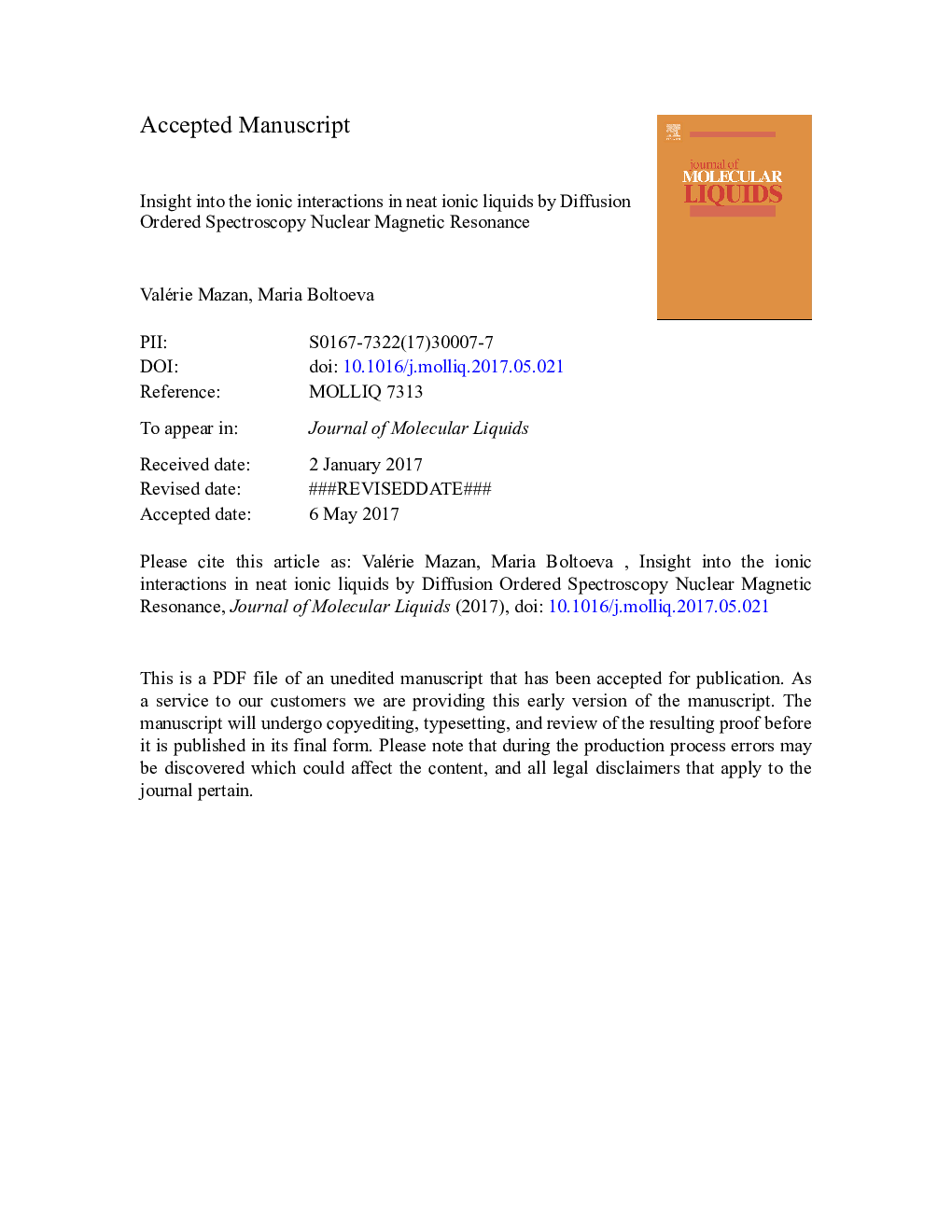| Article ID | Journal | Published Year | Pages | File Type |
|---|---|---|---|---|
| 5408050 | Journal of Molecular Liquids | 2017 | 14 Pages |
Abstract
In this article, the transport properties of 1-alkyl-3-methylimidazolium [Cnmim+] (n = 2, 4, 6, 8 and 10) or N-propyl-N-methylpyrrolidinium [C3C1pyrr+] cations and bis(trifluoromethanesulfonyl)imide [Tf2Nâ] anions were studied by Diffusion Ordered Spectroscopy Nuclear Magnetic Resonance (DOSY NMR). The self-diffusion coefficients D of the cations and anions were measured. The values of D decrease in order [C2mim][Tf2N] > [C4mim][Tf2N] â [C3C1pyrr][Tf2N] > [C6mim][Tf2N] > [C8mim][Tf2N] > [C10mim][Tf2N]. For [Cnmim][Tf2N] with n = 2, 4 and 6 and [C3C1pyrr][Tf2N], the ionic liquid cation diffused faster than anion, for n = 8, the cation and anion diffused almost with the same speed and the cations and anions diffused together for n = 10. The motion of each ion of [Cnmim][Tf2N] and [C3C1pyrr][Tf2N] is connected with macroscopic physical properties such as viscosity, conductivity and microscopic aspects as intermolecular forces, local microstructure and dynamic heterogeneities of cations. Each coulombic force, hydrogen bonding and Van der Waals interactions play a role and the equilibrium between them is changed with the length of alkyl chain in the imidazolium-based ionic liquid.
Related Topics
Physical Sciences and Engineering
Chemistry
Physical and Theoretical Chemistry
Authors
Valérie Mazan, Maria Boltoeva,
